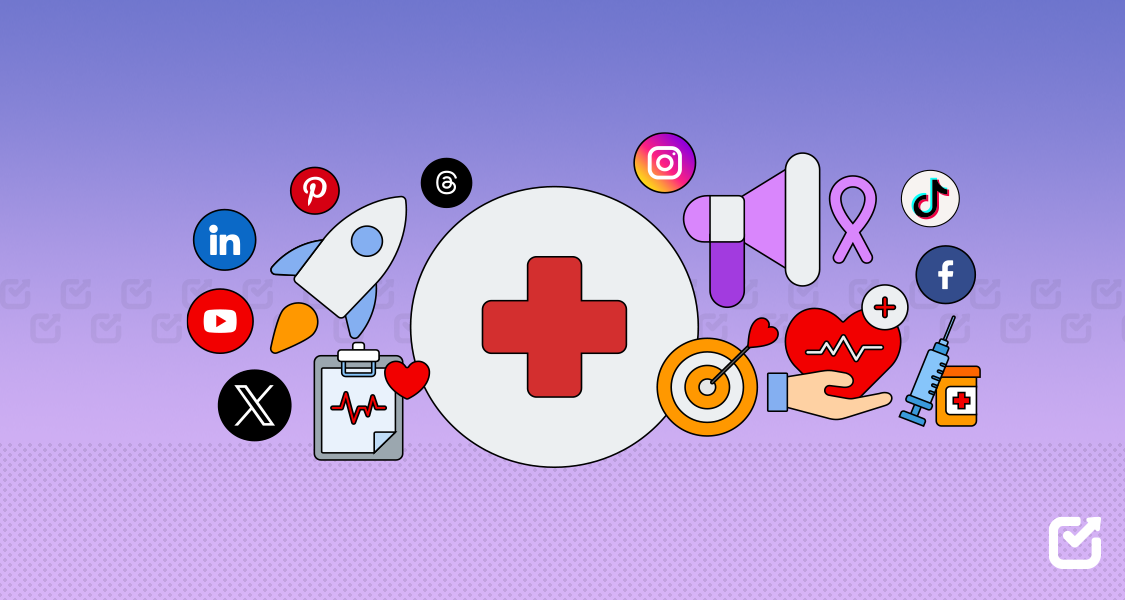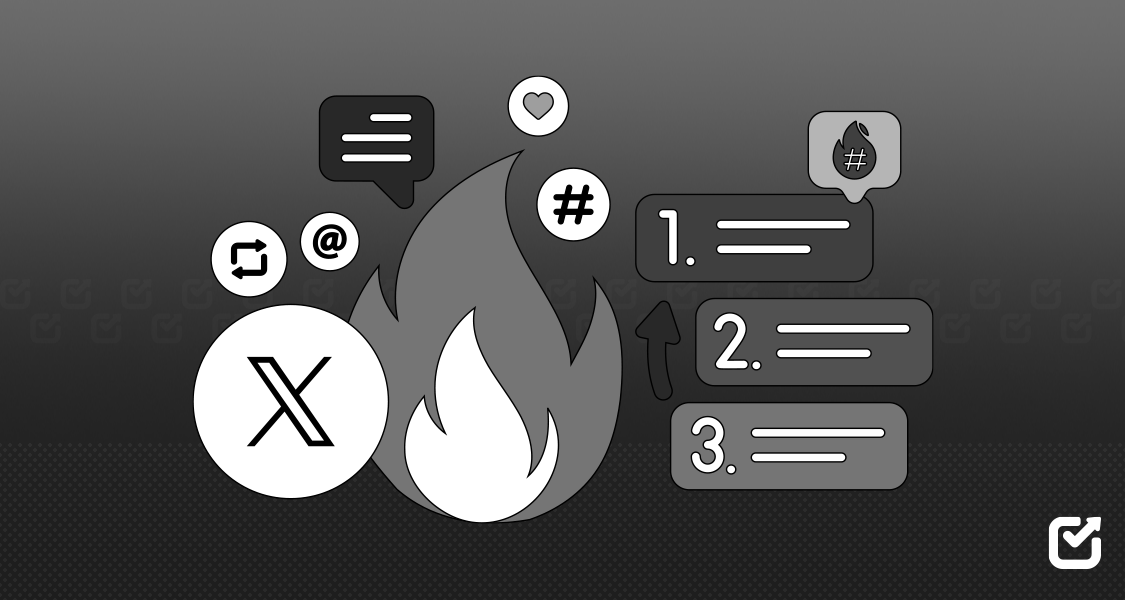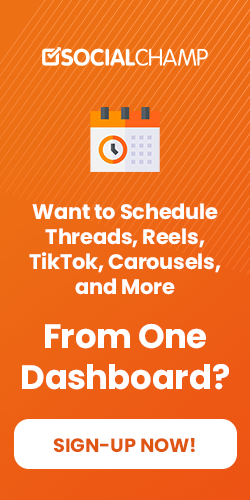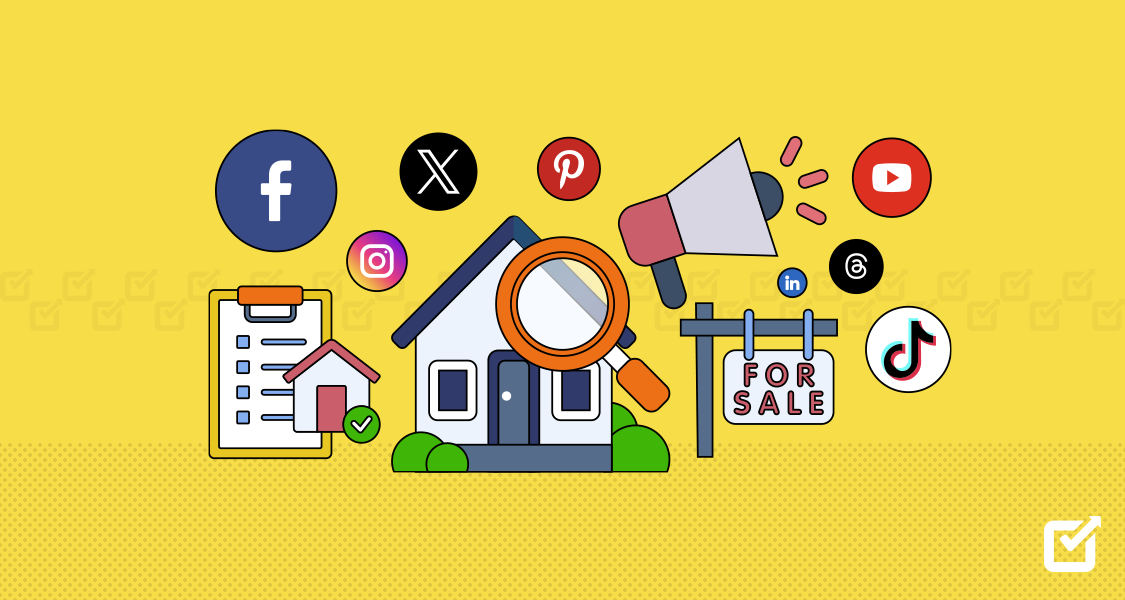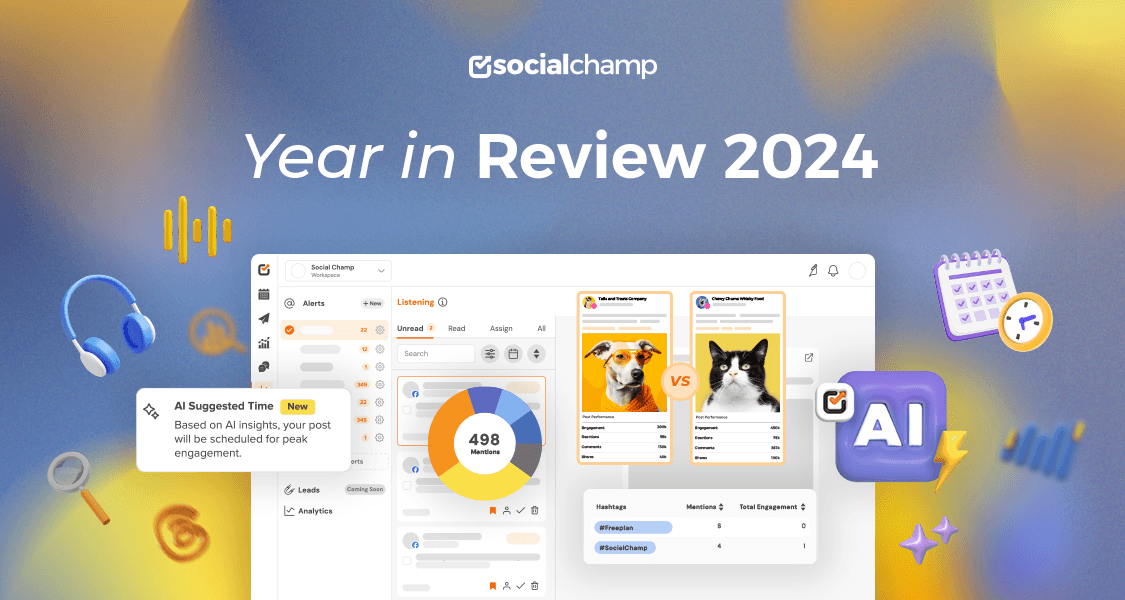Is your healthcare brand still posting weekly and claiming it as a strategy?
That’s no longer enough!
Healthcare social media marketing has moved from a “nice-to-have” to a must-have—and quickly.
Today, patients don’t only look for doctors; they look for reputations.
They want to know how you appear online, how you speak, and if they can trust you before they ever make an appointment.
In fact, 72% of patients consider online reviews their primary source of information when selecting a new healthcare provider.
That trust begins to build on social media, sometimes before your website is even seen.
If you’re not actively engaging, educating, and establishing credibility online, you risk losing your patients.
Whether you’re in private practice, running a multi-office clinic, or working for an agency representing healthcare clients, it’s time to reconsider how you’re doing it.
This blog will guide you on exactly how to make healthcare social media marketing work for you in 2025.
Let’s dive in!
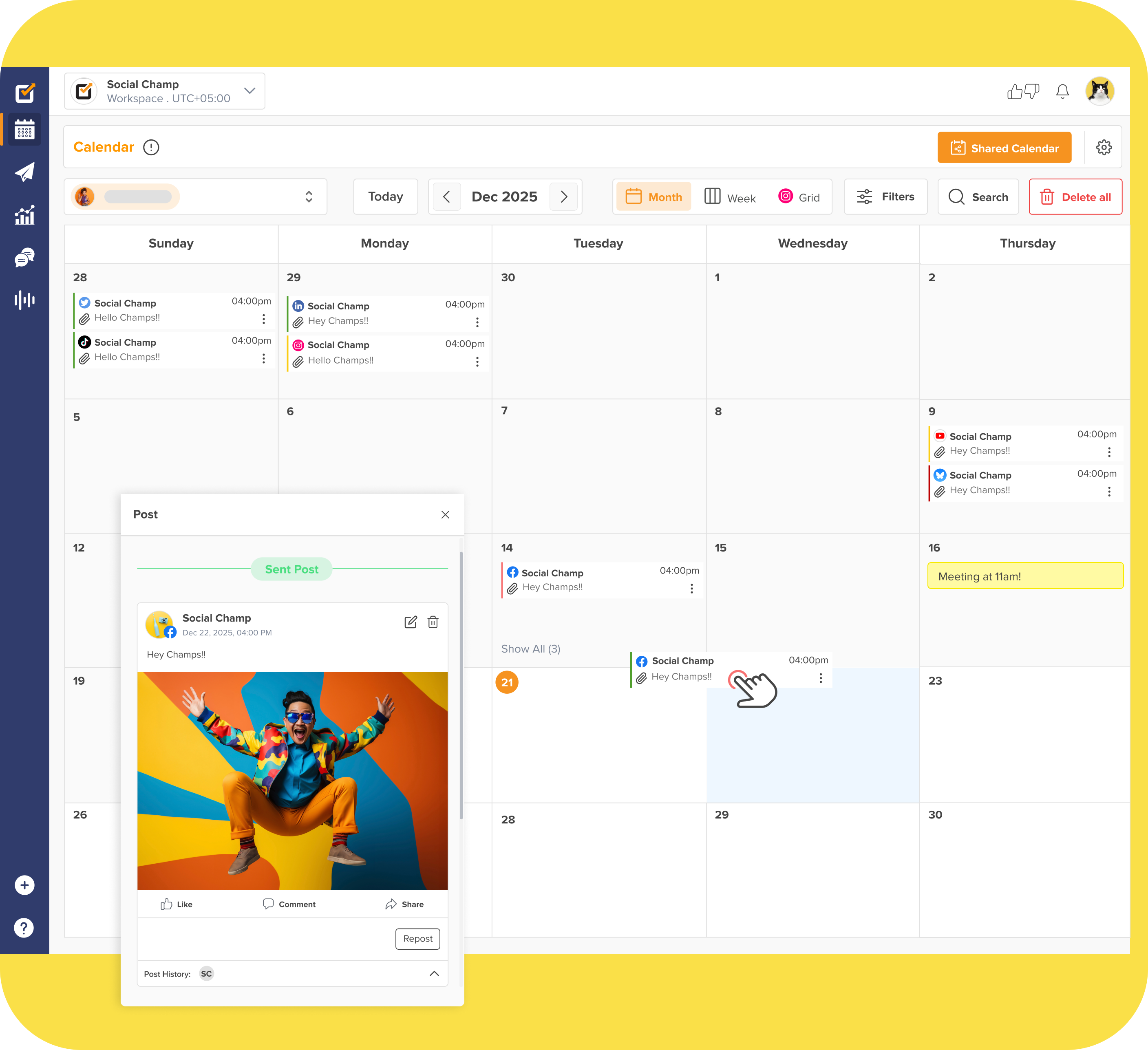
Automate Your Healthcare Social Media in Minutes!
Stop wasting time manually posting content. With Social Champ, you can schedule, manage, and track all your healthcare posts in one place.
Short Summary
- Healthcare social media marketing establishes trust before patients ever set foot in your office.
- Educational content makes complicated health issues easier to understand and empowers patients.
- Sharing patient success stories builds emotional connection and social proof.
- Highlighting the human side of your team makes your practice more relatable.
- Posting consistently keeps your brand top of mind for patients.
- Commenting shows you’re listening and care about your community.
- Short-form content and awareness campaigns increase engagement and reach.
- Tools like Social Champ automate tasks, such as scheduling, content planning, and analytics.
Benefits of Healthcare Social Media Marketing That Matters Today
Social media is no longer a trend space and meme park—it’s where patients seek out information, interact with providers, and choose who they want to trust with their care.
If your healthcare brand isn’t constantly appearing online, you’re not just losing likes—you’re losing real opportunities.
Here are the most significant benefits of healthcare social media marketing that truly matter:
Build Trust Before the First Appointment
Nowadays, patients are doing their research.
They read reviews, examine your posts, and scroll through your comments before they ever make a call to your office.
Having a strong social media presence makes them feel like they already know you, and that establishes trust quickly.
Ways to Do It:
- Reveal the human side of your team.
- Share success stories and testimonials, with permission.
- Answer comments and questions to show you’re engaged.
Educate Patients on Their Terms
According to the CHCS, nearly 9 in 10 adults struggle with understanding daily health information.
To educate patients about healthcare, simple, easy-to-understand content is far more effective.
Social media enables you to share valuable tips, wellness reminders, and answers to frequently asked questions, all without the need for medical terminology or waiting rooms.
Ways to Do It:
- Share bite-sized health education that people can actually use.
- Address seasonal concerns such as flu vaccines or allergy advice.
- Break down complex topics using images or short videos to make them more accessible.
Boost Patient Engagement That Feels Natural
You don’t have to “sell” healthcare. You just need to stay connected and engaged.
Consistent posting and engagement keep your brand at the top of patients’ minds when they are ready to take action.
Ways to Do It:
- Employ Q&As, polls, or Stories to initiate discussions.
- Post reminders for check-ups, screenings, or seasonal care.
- Mark awareness months and show you’re a member of the community.
Position Yourself as a Trusted Expert
When you consistently share credible and valuable content, you establish your brand as the go-to voice in your region or specialty.
That’s not only good for visibility—it makes you the first choice when patients are ready to make a decision.
Ways to Do It:
- Share expert tips, videos, or explainers from your providers.
- Stay up-to-date on health news and comments when it’s appropriate.
- Be a trusted source that patients return to for reliable information.
Save Time and Reduce Staff Burnout
Rather than repeating the same questions via phone, your social media can handle a lot of communication at scale.
Ways to Do It:
- Post once to reach everyone at once.
- Use scheduling tools like Social Champ to plan ahead.
- Free up your staff for more individual interactions.
Featured Article: 10 Best Digital Marketing Platforms for 2025 – Boost Your Growth
Top Healthcare Social Media Marketing Strategies
Achieving results with healthcare social media marketing isn’t about copying what other clinics are doing—it’s about paying attention to what your audience actually cares about.
Today, patients want clarity, connection, and consistency.
Whether you’re managing a local practice or operating multiple locations, these strategies will make you stand out, remain credible, and expand your digital presence.
-
Educate With Clear, Useful Content
Educational content is the core of healthcare social media marketing.
Patients are seeking content that makes their health experience less overwhelming and more comprehensible.
- Break down complex conditions into manageable, bite-sized posts.
- Post step-by-step instructions, such as “How to Prepare for Your First Visit.”
- Explain standard procedures using infographics or short videos to enhance understanding.
This type of content reinforces your position as an authority and supports the bigger goal of social media and healthcare marketing.
Check out this video on Instagram by @drjamesnal, giving healthy food tips.
-
Share Patient Success Stories
Storytelling is a strong component in social media marketing healthcare, as it personalizes your company.
- Patient testimonials offer actual results that other prospective patients can relate to.
- Share brief videos of patients describing their recovery (with permission).
- Post quotes with before-and-after photos or case overviews.
Emphasize various aspects of care, including mental health, physical therapy, and pediatrics.
When told sincerely, these stories show an emotional connection and social proof that drives engagement.

A Patient’s Success Story Post on Instagram -
Highlight Your Team’s Human Side
People don’t connect with clinics—they connect with people.
Providing your team with a warm welcome makes your practice more accessible and establishes credibility.
- Share staff highlights or “Meet the Doctor” posts.
- Post fun, casual behind-the-scenes interactions at the office.
- Celebrate work anniversary, birthday, or team victories.
This personal perspective is a key component of healthcare social media marketing, as it establishes a sense of familiarity before patients even enter the premises.
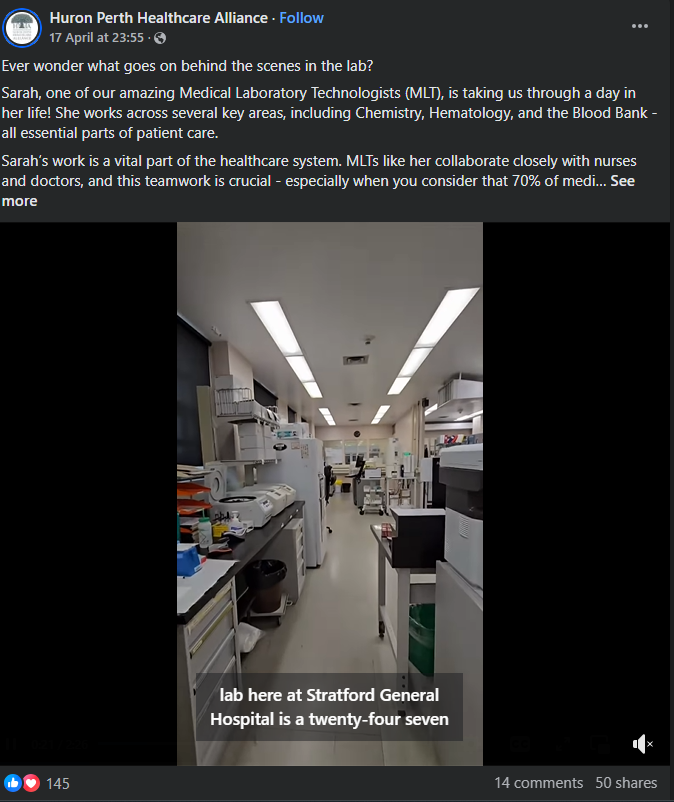
A Behind-the-Scenes Video of a Laboratory Technologist -
Post Consistently
Random posting creates random outcomes.
For building a robust presence, consistency is your most valuable asset in social media marketing for healthcare.
- Use a content calendar to schedule posts by week or month.
- Select a posting frequency that you can maintain reliably.
- Combine educational, personal, and promotional content to stay balanced.
Consistency ensures you remain visible, and in the fast-moving world of social media and healthcare marketing, staying visible is everything.
-
Answer Frequently Asked Questions
Every healthcare provider receives the same questions every single day.
Why not transform them into social content?
- Turn to common questions, such as “Why don’t you call me for preventive care?” into posts.
- Take speedy Q&A videos with your doctors or staff.
- Organize FAQ content using Instagram Stories or Highlights.
Not only is this a helpful approach, but it also reduces friction for both new and existing patients.
Have a look at this video of Health Q&A.
-
Engage on Comments
Posting is just the first step.
Real growth in healthcare social media marketing happens via engagement.
- Respond promptly and professionally to patient comments.
- Handle concerns or queries in public where possible.
- Use humor and humanity to make conversations more engaging and enjoyable.
Engaging in comments builds trust and conveys to your audience that you’re listening, not just broadcasting.
-
Show Up for Health Awareness Campaigns
Tapping into seasonal and national health observances shows that you’re in tune with broader community conversations.
- Participate in awareness months, such as Breast Cancer Awareness Month or Heart Health Month.
- Share facts, tips, or personal stories related to the cause.
- Participate in trending hashtags to increase reach and relevance.
This demonstrates leadership and engagement, two key aspects essential for successful social media marketing healthcare campaigns.
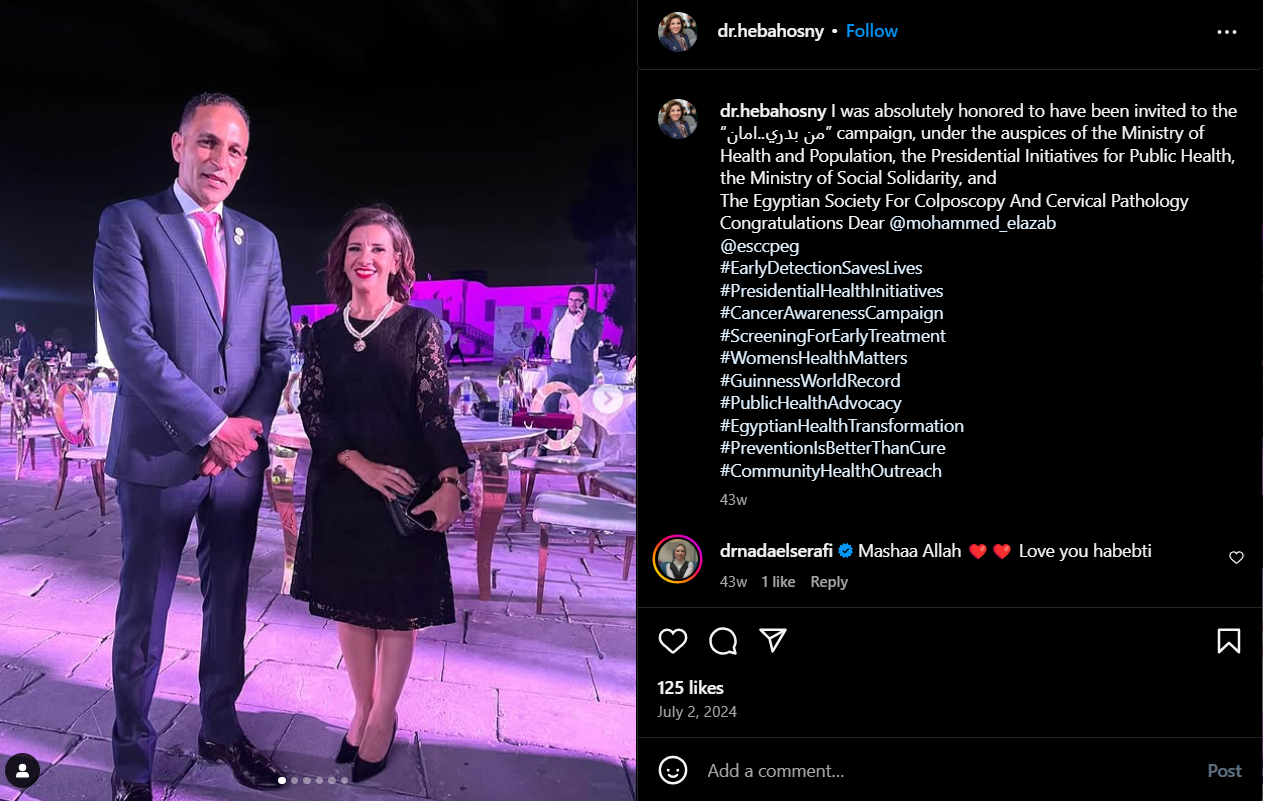
Doctors Participating in the Cancer Awareness Campaign -
Use Short-Form Video to Build Connection
Short-form video remains supreme, and it’s one of the best ways to humanize healthcare.
- Record 30-second health tips or explainers.
- Create a “day in the life” of a provider or nurse.
- Utilize captions and text overlays to keep content accessible.
When appropriately utilized, video creates familiarity and engagement—two things difficult to obtain in busy feeds.
Check out this “day in the life” video of a doctor on YouTube.
-
Encourage Community Participation
Your clinic is not merely a business—it’s part of the community.
Demonstrate that with your social presence.
- Highlight your involvement in local events or fundraisers.
- Partner with local organizations or schools.
- Celebrate patient milestones (with permission).
This reinforces your brand’s commitment to service, a vital cornerstone in social media and healthcare marketing.
-
Use Analytics to Guide Your Strategy
Your data has a story to tell.
By monitoring your performance, you stop guessing and start improving.
- Identify your top-performing content types and subjects..
- Adjust your posting schedules to align with when your audience is online.
- Monitor engagement, not followers, to measure real impact.
Use analytics as a guide so that each piece of content has a clear purpose and each post makes a meaningful impact.
Healthcare social media marketing isn’t about being seen—it’s about being of value.
These strategies don’t need a huge team or expensive technology. They only need a plan, a clear voice, and the commitment to show up for your audience with intention.
Navigating HIPAA Compliance in Social Media Marketing
Social media is an incredibly effective tool for healthcare, but it comes with significant responsibility.
When handling patient data, there is no room for mistakes.
Healthcare social media marketing must adhere strictly to HIPAA regulations to prevent violations, legal issues, and damage to patient trust.
Let’s break down how to stay compliant while creating valuable, engaging content that builds your brand online.
Understand What HIPAA Protects
The Health Insurance Portability and Accountability Act (HIPAA) is designed to protect sensitive patient health information.
On social media, you have to be very cautious about what you share, no matter how well you mean it.Protected Health Information (PHI) encompasses:
- Patient names, pictures, or videos.
- Treatment timelines or appointment schedules.
- Any health situation that can be linked to a person.
Even if a patient isn’t directly named, you could still be violating HIPAA if the content allows someone to identify them.
Get Written Consent—Every Time
One of the most common HIPAA offenses in healthcare social media marketing occurs when a team posts patient testimonials, before-and-after images, or videos without clear written consent.
Here’s how to get it right:
- Always get written, HIPAA-compliant consent before publishing any patient-related content.
- Use a standard release form that specifically describes how and where the content will be utilized.
- Keep records on file, even if the patient verbally approves it.
Assume that nothing is safe to post unless it has been cleared through formal consent.
Avoid Discussing Specific Cases Online
It may seem helpful to use actual cases or patient stories.
Still, even vague references can result in a HIPAA violation if someone recognizes themselves, or if someone else can figure it out.
Rather than using specific patient examples:
- Speak in general terms when educating or sharing insights.
- Use hypothetical cases or scenarios.
- Keep your mind on conditions, treatments, or trends, not individuals.
This method keeps you safe while still providing valuable content in your healthcare and social media marketing strategy.
Train Your Team on Social Media Protocols
A single careless post from a staff member can cause significant damage.
All staff members who contribute to your social media marketing healthcare campaigns must be familiar with HIPAA and understand what is off-limits.
Best practices include:
- Conducting a quick HIPAA and social media training for new hires.
- Creating a checklist or approval workflow for all posts.
- Assigning final review duties to someone with compliance knowledge.
Keeping your team aligned reduces risk and creates a safer environment for everyone.
Use a Review Process Before Publishing
Whether you’re a solo provider or part of a large healthcare group, every post should be reviewed before it goes live.
That includes text, photos, videos, and even comments or replies.
Your review checklist should include:
- Checking for any mention or hint of PHI.
- Confirming consent forms are on file for patient-related content.
- Ensuring language is respectful, professional, and suitable for the intended audience.
Speed is essential in healthcare social media marketing, but not at the expense of patient privacy.
Featured Article: Social Media for Investors: The Ultimate Guide to Networking & Market Insights in 2025
Which Social Media Tools for Healthcare Marketing Can You Use?
Managing multiple platforms, staying consistent, and being compliant can be overwhelming, particularly in healthcare social media marketing.
The good news? The right tools can make it easier, save time, and keep you compliant while enabling you to provide high-value content your audience actually wants.
Here are three top tools that streamline social media marketing for healthcare teams and professionals.
-
Social Champ
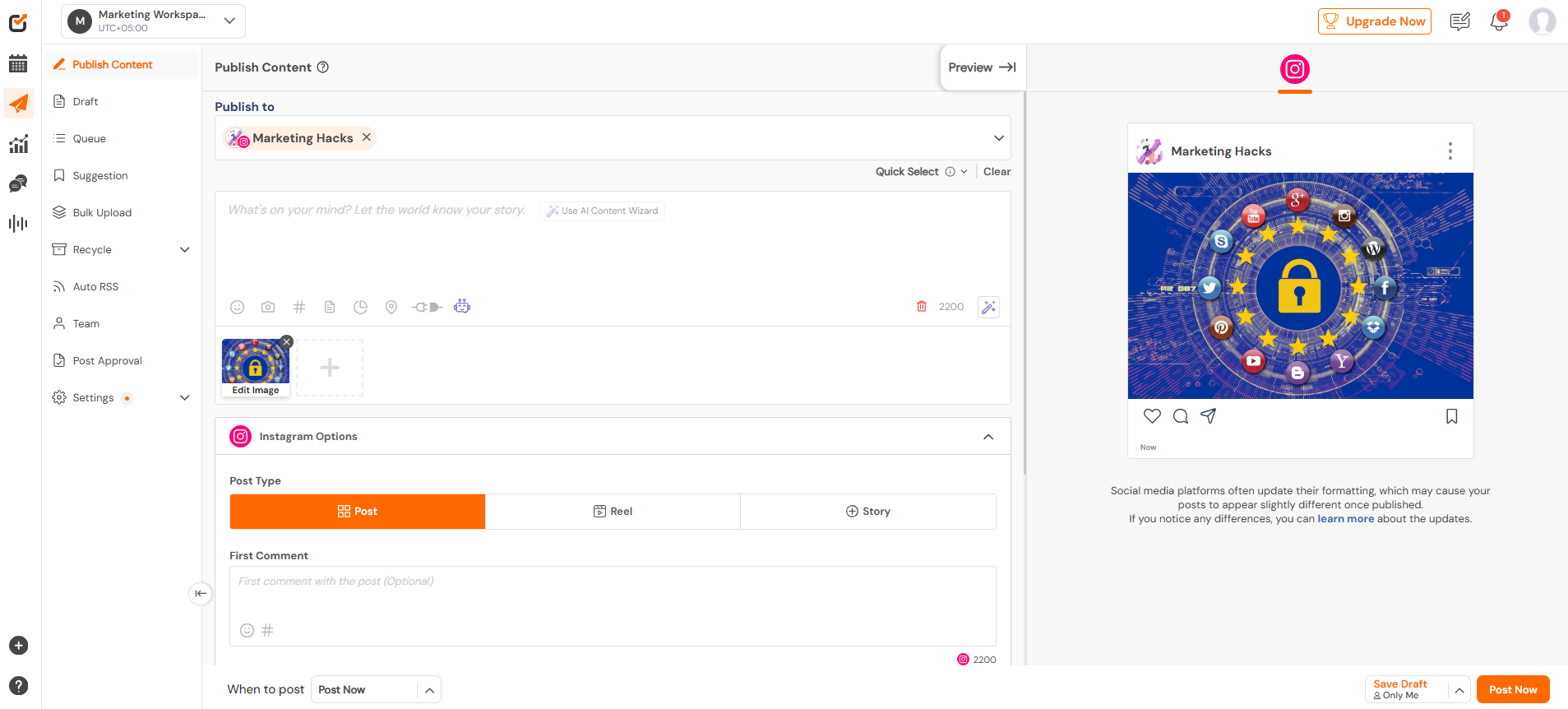
Social Champ’s Dashboard Social Champ is designed for businesses that need to stay organized, consistent, and compliant, making it an ideal solution for healthcare providers.
From scheduling content to analytics and collaboration among team members, it helps you in managing the everyday aspects of healthcare marketing and social media without stress.
Key Benefits of Social Champ:
- Smart Content Scheduling: Schedule posts across multiple platforms weeks in advance so your feed remains active, even when you’re busy caring for patients.
- In-Depth Analytics: Monitor engagement, reach, and follower gain to understand what’s performing and optimize strategy over time.
- Team Roles and Approvals: Assign access to staff members and build in approval
workflows.
Additionally, you can repurpose evergreen educational content with ease, track campaigns, and remain well-organized with its sleek dashboard—all without needing technical skills.
For any health brand attempting to scale social efforts cost-effectively, Social Champ is the tool that makes it easy and efficient.

Want to Save Time Without Sacrificing Results?
Plan posts, schedule them across platforms, monitor engagement, and track performance—without switching tools or losing time.
-
Canva

Canva’s Dashboard Good content isn’t what you write—it’s how you write it.
Canva helps healthcare professionals create sleek, on-brand graphics that educate, connect, and maintain a professional image.
Why Healthcare Teams Adore Canva:
- Health tips, awareness days, and infographic templates.
- Simple drag-and-drop design without any design experience required.
- Utilize brand kit tools to maintain consistency in fonts, colors, and logos across all posts.
Pairing Canva with a content scheduler, such as Social Champ, can elevate your overall social media healthcare marketing strategy to the next level, especially when visual consistency is crucial to your audience.
-
Sprout Social
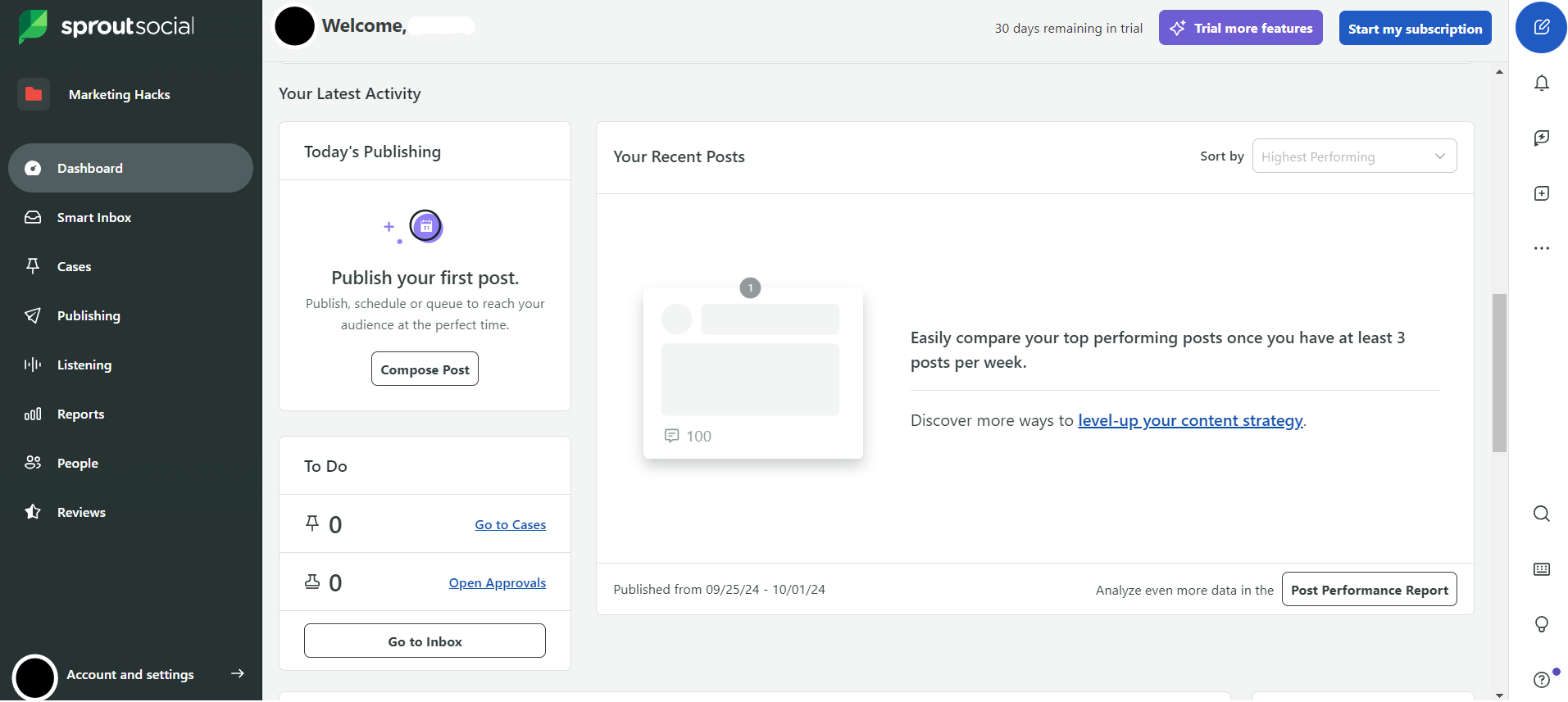
Sprout Social’s Dashboard For large organizations and agencies managing multiple accounts, Sprout Social offers more advanced features for tracking, reporting, and engaging at scale.
Top Features Include:
- Strong analytics to monitor campaign performance and patient engagement trends.
- Social listening tools to track mentions and sentiment for your brand or services.
- CRM integration to help connect patient interactions to actual outcomes.
Although it’s more enterprise-focused, Sprout Social is an excellent option for high-volume healthcare social media marketing teams that require more depth.
Conclusion
Healthcare social media marketing isn’t optional—it’s essential.
Patients aren’t just Googling doctors near them anymore; they’re checking your Instagram, watching your videos, and reading comments before ever making a call.
The benefits go far beyond “likes”—we’re talking about absolute trust, patient education, stronger relationships, and more meaningful engagement.
If your healthcare brand or clinic isn’t constantly appearing with clean, functional, and compliant content, you’re opening the door for your competitors to step in.
The good news? You don’t need a giant team or endless hours of work to get it done.
With the right techniques—and resources like Social Champ to do the heavy lifting—you can build an online presence that educates, engages, and converts.
